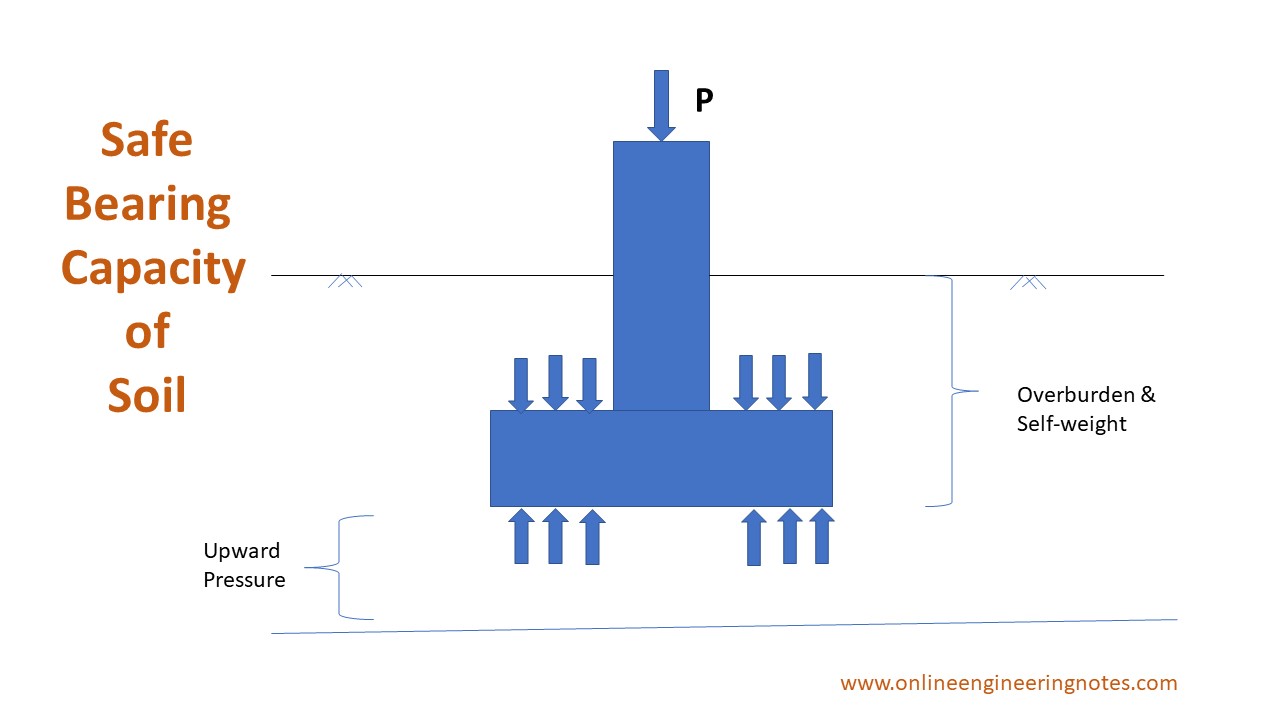Introduction
The deformation of soil is a natural and physical phenomenon. Civil Engineering structures built on soils such as buildings, dams, bridges, roads, rails, etc. transmit load over a large area of soil through foundations or substructures. Soil tends to deform with the settlement or fail in shear. Therefore, the resistance to deformation of the soil is its bearing capacity. This resistance to deformation depends on various factors such as water content, bulk density, angle of friction, and the manner of application of loads.
Bearing capacity
The supporting power of soil is called the bearing capacity of the soil. In other words, the load or pressure developed under the foundation without introducing any damaging movement in the foundation and in the supporting structure is called the bearing capacity of the soil. It depends upon the grain size of the soil, the size, and the shape of the footing. The bearing capacity of soil increases with the decrease in the area of the footing.
Types of bearing capacity
- Ultimate bearing capacity
It is defined as the gross pressure intensity at the base of the foundation at which the soil fails in shear. It is denoted by qf. Gross pressure intensity at the bed of footing is due to weight of the superstructure including self-weight of footing and overburden pressure due to earth fill and is denoted by q.
- Net ultimate bearing capacity
It is the minimum net pressure intensity at the base of the foundation causing shear failure of soil. It is denoted by qnf.
qnf=qf–gD
Where, D= depth of soil
Net pressure intensity is the difference between gross pressure intensity and original over burden pressure.It is denoted by qn.It is given by the equation.
qn=q-gD
gD= overburden pressure
- Safe bearing capacity
The maximum pressure which soil can carry safely without the risk of shear failure. It is obtained by adding net safe bearing capacity plus original overburden pressure. It is denoted by qs.
qs= qnf/F + gD
- Net safe bearing capacity
It is the net ultimate bearing capacity divided by factor of safety.
qns = qnf/F
- Allowable bearing capacity
Allowable bearing capacity is the loading intensity at which neither the soil fails by shear nor excessive settlement. It is used for designing of any structure.
Factor Influencing Bearing Capacity
There are various factors influencing the bearing capacity of the soil. The bearing capacity varies over a range for cohesive and cohesion-less soil. The physical features of foundation such as type of foundation, size of foundation, depth of foundation and shape of foundation significantly affect the bearing capacity. The amount of total and differential settlement is one of the main controlling factors for the bearing capacity of soil. The relative density in the case of granular soil and consistency in the case of cohesive soil play a deceive role in influencing the bearing capacity. The physical as well as engineering properties of soils such as density, cohesion and friction, position of water table and original stresses are the main factors governing the soil bearing capacity.
Factors influencing bearing capacity of soils
- Types of soil (coarse grained soil has greater bearing capacity than fine grained soil)
- Physical features of the foundations (types, size, shape, depth, rigidity)
- The amount of total and differential settlement
- Physical properties of soil (grain size)
- Position of water level (WT)
- Fluctuation in the level of ground water table
- Structural arrangement of soil
References
- Terzaghi, Karl, Peck, R.B & John, Wiley (1969) Soil mechanics in engineering practice, New York.
- Arora , K.R (2008), Soil mechanics and foundation engineering, Delhi: Standard Publisher Distribution

